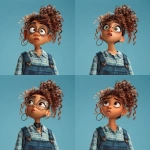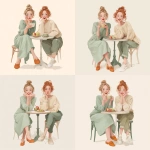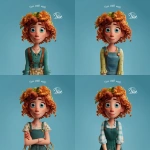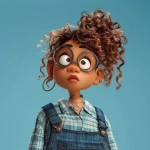Explore the Best AI Image Gallery
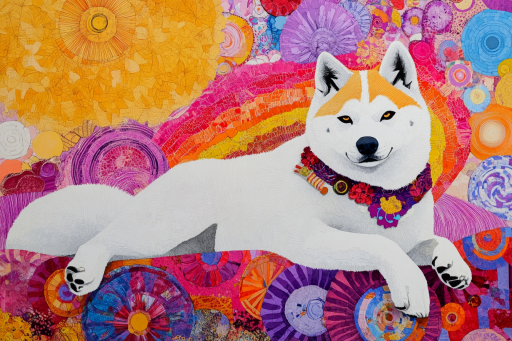
The Intersection of AI Images and Design: Exploring New Frontiers
In recent years, artificial intelligence (AI) has begun to make significant inroads into various creative fields, with AI-generated images leading the charge. This innovative shift has sparked a transformative discourse within the design industry, challenging traditional methods and inspiring a wave of creativity. As designers embrace AI-powered tools, it is essential to explore the impact, potential uses, and ethical considerations arising from this technology.
The Impact of AI on the Creative Industry
AI-generated images are revolutionizing how designers conceptualize and produce visual works. Designers can utilize algorithms to generate a plethora of images tailored to specific styles, themes, and aesthetics. This capability allows for the rapid generation of design prototypes and visual concepts, enabling designers to explore more ideas in a fraction of the time. Companies like Adobe have harnessed AI technologies to enhance user creativity through tools like Adobe Sensei, which improves workflows and augments creative capabilities.
Moreover, AI image generators like DALL·E 2 allow businesses and creatives to produce high-quality images with little input. Even individuals without extensive design skills can now create compelling visuals, democratizing the art of design and expanding the creative landscape. This transformation fosters collaboration between humans and algorithms, amalgamating human intuition and machine precision.
Potential Uses of AI-Generated Images
The applications of AI-generated images are vast and varied, including:
- Marketing and Branding: Advertisers are already leveraging AI-generated imagery to create compelling marketing campaigns that resonate with target audiences. These tools allow brands to swiftly adapt their visuals based on analytics and audience feedback.
- Virtual Environments: In architecture and gaming, AI-generated images can help create immersive environments, allowing designers to visualize complex settings before construction or deployment.
- Personalized Content: AI can be used to generate tailored content for individual users. Companies can offer unique visuals based on user preferences, leading to enriched user experiences.
- Fashion Design: Fashion designers can use AI to conceptualize new styles, analyze trends, and even generate fabric patterns without the constraints of traditional design processes.
- Art Collaborations: Artists are experimenting with AI to co-create works that push the boundaries of creativity. AI can act as a partner, adding unexpected elements to human-created art.
Ethical Considerations
As with any technological advancement, the use of AI in design prompts essential ethical questions. Here are some key concerns:
- Ownership: The question of who owns AI-generated images remains murky. If an AI creates an artwork based on input from a human designer, who holds the copyright? This ambiguity necessitates clearer guidelines and legislation in the creative industry.
- Job Displacement: There are concerns that AI could replace human designers, leading to potential job losses. While AI is a powerful tool, it should be viewed as an augmentation of human creativity rather than a replacement.
- Bias in AI: AI systems are only as good as the data used to train them. If the datasets are biased, AI-generated images may perpetuate stereotypes or fail to represent diverse perspectives.
- Authenticity: As AI-generated content proliferates, questions regarding authenticity and originality may arise. How do we define art in an era where machines can replicate and adapt human creativity?
Future Trends in AI and Design
The future of AI images in design holds exciting possibilities. Here are a few trends to watch:
- Enhanced Collaboration: As AI tools evolve, we may see deeper integration between designers and AI, leading to innovative forms of collaboration that exploit each's strengths.
- Customized AI Solutions: Expect to see more niche AI tools designed for specific industries or design disciplines, providing tailored solutions for unique creative challenges.
- Greater Accessibility: AI technology will likely become more affordable and user-friendly, allowing broader access for independent creators and small businesses.
- Increased Ethical Frameworks: As the dialogue around ethics in AI grows, expect more robust frameworks to regulate the use of AI-generated content and protect the rights of creators.
In conclusion, AI-generated images are shaping the future of design in powerful ways. As we navigate this new creative landscape, it is crucial to balance innovation with ethical responsibility. The intersection of AI and design heralds a new era of creativity, enabling diverse applications and redefining the boundaries of artistic expression.
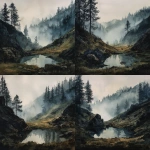
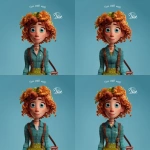
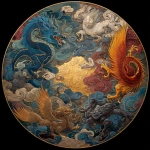

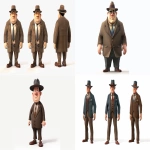
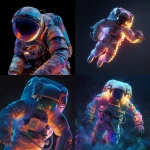
](https://images.ai-img.art/thumbnails/150/4f3d83c4b1d979b5be00f4ea80d67b71c0335bc1163e692d738e553ac37709e5.webp)
![**ultra detailed 8k cinematic black and white beauty portrait of a young woman from chest up, vertical frame, face, hands and hair filling the composition, smooth neutral grey studio background with soft dark vignette on the edges, center of the frame is her eye, lips and finger in a "shh" gesture oval symmetrical face with soft but well defined features, ultra smooth flawless skin, no pores, no wrinkles, perfect beauty retouch, straight elegant nose with soft highlight along the bridge and gentle shadow under the tip full sensuous lips with a sharp cupid’s bow, slightly parted, a thin bright glossy highlight strip on the lower lip emphasizing volume, subtle light reflection on the lip gloss one eye visible through a gap between fingers, other eye mostly hidden by the upper hand, long thick eyelashes like fake lashes, small bright catchlight in the pupil, upper eyelid with smoky eye makeup, darker tone along lash line fading smoothly towards the brow, dark thick well shaped eyebrows, gently arched, not overdramatic dark wavy hair, big glossy waves falling down, one clear S-shaped wave on the right side of the frame, soft highlights along the strands to show texture, hair swept away from the cheeks so the face is not covered both hands in thin semi-transparent black gloves up to the forearm, upper hand placed horizontally across the upper face, back of the hand towards camera, fingers slightly spread so that one finger is above the brows and another lower finger creates a narrow gap that reveals the eye, fingertips long and tapered, sharp stiletto-like nails visible under the sheer fabric, subtle darker seams along the fingers and glove edges lower hand bent so that the index finger is vertical and gently touching the center of the lips in a classic "shhh" pose, [...]** - Image #3 <@1264899319799222315>](https://images.ai-img.art/thumbnails/150/4c03a422708b372b43caaee1e2929933c40f0a13dc069beeeb228a60b126223b.webp)
](https://images.ai-img.art/thumbnails/150/e07ad2e7379a835127482b0fd3176192c001c90e68a85b4315cf482b6a3f5ea5.webp)

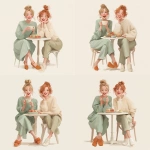
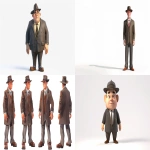
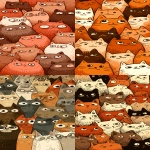
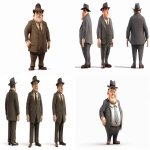
![**ultra detailed 8k cinematic black and white beauty portrait of a young woman from chest up, vertical frame, face, hands and hair filling the composition, smooth neutral grey studio background with soft dark vignette on the edges, center of the frame is her eye, lips and finger in a "shh" gesture oval symmetrical face with soft but well defined features, ultra smooth flawless skin, no pores, no wrinkles, perfect beauty retouch, straight elegant nose with soft highlight along the bridge and gentle shadow under the tip full sensuous lips with a sharp cupid’s bow, slightly parted, a thin bright glossy highlight strip on the lower lip emphasizing volume, subtle light reflection on the lip gloss one eye visible through a gap between fingers, other eye mostly hidden by the upper hand, long thick eyelashes like fake lashes, small bright catchlight in the pupil, upper eyelid with smoky eye makeup, darker tone along lash line fading smoothly towards the brow, dark thick well shaped eyebrows, gently arched, not overdramatic dark wavy hair, big glossy waves falling down, one clear S-shaped wave on the right side of the frame, soft highlights along the strands to show texture, hair swept away from the cheeks so the face is not covered both hands in thin semi-transparent black gloves up to the forearm, upper hand placed horizontally across the upper face, back of the hand towards camera, fingers slightly spread so that one finger is above the brows and another lower finger creates a narrow gap that reveals the eye, fingertips long and tapered, sharp stiletto-like nails visible under the sheer fabric, subtle darker seams along the fingers and glove edges lower hand bent so that the index finger is vertical and gently touching the center of the lips in a classic "shhh" pose, [...]** - Image #1 <@1264899319799222315>](https://images.ai-img.art/thumbnails/150/ff5a24c7c060f5350508823c406c28c9596aea4e37eefb60abc0f37504a37383.webp)
![**ultra detailed 8k cinematic black and white beauty portrait of a young woman from chest up, vertical frame, face, hands and hair filling the composition, smooth neutral grey studio background with soft dark vignette on the edges, center of the frame is her eye, lips and finger in a "shh" gesture oval symmetrical face with soft but well defined features, ultra smooth flawless skin, no pores, no wrinkles, perfect beauty retouch, straight elegant nose with soft highlight along the bridge and gentle shadow under the tip full sensuous lips with a sharp cupid’s bow, slightly parted, a thin bright glossy highlight strip on the lower lip emphasizing volume, subtle light reflection on the lip gloss one eye visible through a gap between fingers, other eye mostly hidden by the upper hand, long thick eyelashes like fake lashes, small bright catchlight in the pupil, upper eyelid with smoky eye makeup, darker tone along lash line fading smoothly towards the brow, dark thick well shaped eyebrows, gently arched, not overdramatic dark wavy hair, big glossy waves falling down, one clear S-shaped wave on the right side of the frame, soft highlights along the strands to show texture, hair swept away from the cheeks so the face is not covered both hands in thin semi-transparent black gloves up to the forearm, upper hand placed horizontally across the upper face, back of the hand towards camera, fingers slightly spread so that one finger is above the brows and another lower finger creates a narrow gap that reveals the eye, fingertips long and tapered, sharp stiletto-like nails visible under the sheer fabric, subtle darker seams along the fingers and glove edges lower hand bent so that the index finger is vertical and gently touching the center of the lips in a classic "shhh" pose, [...]** - Image #2 <@1264899319799222315>](https://images.ai-img.art/thumbnails/150/d87499f6bdc5a4a822aea4674654f70073b052542a1aaa1d08461a13ca2e07f9.webp)



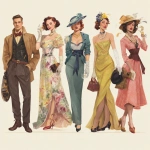
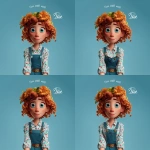
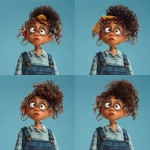


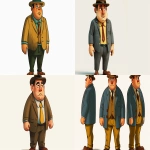
](https://images.ai-img.art/thumbnails/150/1871c145bfe0276c6e1bacf6ec0da6d2dae71370bf71674589af29a201acdd5f.webp)
](https://images.ai-img.art/thumbnails/150/5487dcbcab0cd5702a67cc6819342ef56c05d0fc7730bfb7718ee291f10c3da3.webp)
](https://images.ai-img.art/thumbnails/150/7c4350a99935771fe343a7ae65c780cf4cd6b861e69cdc32bd58a3a92fb2476f.webp)

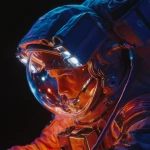
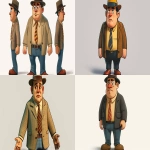

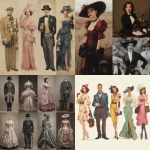
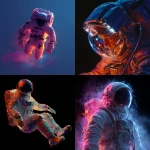

](https://images.ai-img.art/thumbnails/150/f3411154f4c743a26f102ecfc985f3f6214e93b285748fac66c88f3b52f85b26.webp)
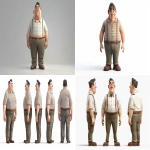


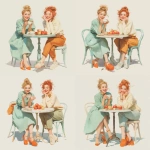
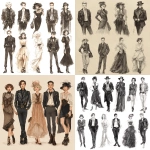
![**ultra detailed 8k cinematic black and white beauty portrait of a young woman from chest up, vertical frame, face, hands and hair filling the composition, smooth neutral grey studio background with soft dark vignette on the edges, center of the frame is her eye, lips and finger in a "shh" gesture oval symmetrical face with soft but well defined features, ultra smooth flawless skin, no pores, no wrinkles, perfect beauty retouch, straight elegant nose with soft highlight along the bridge and gentle shadow under the tip full sensuous lips with a sharp cupid’s bow, slightly parted, a thin bright glossy highlight strip on the lower lip emphasizing volume, subtle light reflection on the lip gloss one eye visible through a gap between fingers, other eye mostly hidden by the upper hand, long thick eyelashes like fake lashes, small bright catchlight in the pupil, upper eyelid with smoky eye makeup, darker tone along lash line fading smoothly towards the brow, dark thick well shaped eyebrows, gently arched, not overdramatic dark wavy hair, big glossy waves falling down, one clear S-shaped wave on the right side of the frame, soft highlights along the strands to show texture, hair swept away from the cheeks so the face is not covered both hands in thin semi-transparent black gloves up to the forearm, upper hand placed horizontally across the upper face, back of the hand towards camera, fingers slightly spread so that one finger is above the brows and another lower finger creates a narrow gap that reveals the eye, fingertips long and tapered, sharp stiletto-like nails visible under the sheer fabric, subtle darker seams along the fingers and glove edges lower hand bent so that the index finger is vertical and gently touching the center of the lips in a classic "shhh" pose, [...]** - Image #4 <@1264899319799222315>](https://images.ai-img.art/thumbnails/150/8507c113aa12343ebd50af4ab9c637a6cf1acf21c55772271eb6a66bb04fa39c.webp)
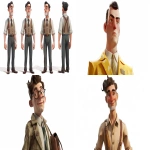
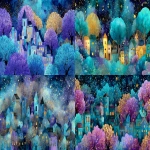
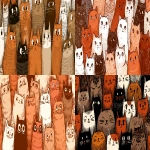
](https://images.ai-img.art/thumbnails/150/d08f607caf4a5c380defef68b778febb8911e8e51e51927b09ed67880bd3084b.webp)
